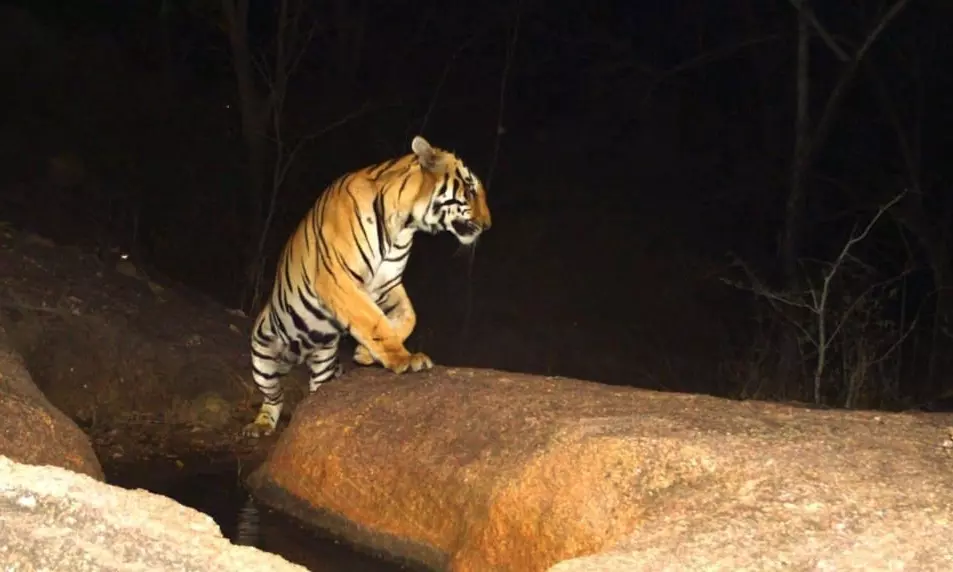Chhattisgarh: Tiger relocated successfully after 8-months operation

Raipur: After eight months of tracking it in a forest in east Chhattisgarh, forest officials rescued a tiger and relocated to a reserve a couple of days ago. The tiger was saved from a poacher and a possible attack by villagers by forest field staff during the period.
The operation, believed to be the longest to rescue a tiger in the wild for relocation, is being billed as a milestone in the conservation.
“The tiger was spotted in Barnawapara wildlife sanctuary in east Chhattisgarh eight months ago. This was the first time in a decade a tiger was sighted in the reserve forest. It was yet to be ascertained from where the tiger came,” Mayank Agrawal, divisional forest officer (DFO), Balodabazar forest division, told Deccan Chronicle on Saturday.
“It took eight months to rescue and relocate the big cat to Guru Ghasidas-Tamor Pingla tiger reserve in north Chhattisgarh,” said Agrawal, whose Balodabazar division falls under Barnawapara wildlife sanctuary.
According to Agrawal, the forest staff drew up a comprehensive range of methodologies aligned with the tiger monitoring protocols prescribed by the National Tiger Conservation Authority (NTCA) to track the big cat.
The operation leveraged modern technology, such as thermal drones to track the tiger, particularly in dense forests at night. Camera traps were strategically deployed to capture images of the tiger. These traps helped identify the tiger by capturing side-flank images of the tiger, which were then matched against NTCA’s centralized data.
“In one instance, a camera trap captured a poacher accompanied by dogs in the area. We located the poacher within 24 hours, foiling the threat to the life of the big cat,” Agrawal said.
In another instance, the tiger was spotted moving close to human habitations in the forest. Officials launched an awareness campaign in the surrounding villages to teach people to be safe and make them aware of the compensation for tiger kills, to prevent them from resorting to retaliatory action.
The tiger’s movement was constantly monitored during the period by collecting evidence such as pug marks, scat, scrape marks and signs of kills, Agarwal said.
When the time was ripe, officials tranquilized the tiger using dart guns, checked its health and released in the Guru Ghasidas-Tamor Pingla tiger reserve.

